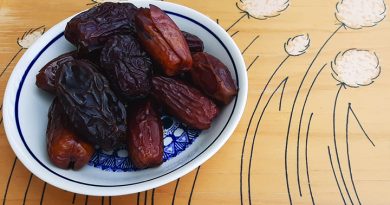Health savvy: 5 top health-wise shopping tips
By Sari Huhtala
Last week at the grocery store I interrupted a woman as she was grabbing a bag of cultivated frozen blueberries out of the freezer, to let her know for a dollar more she could buy frozen wild blueberries, and bypass the nasty pesticides they spray on fruit. She smiled and told me she hadn’t thought of that.
Small changes can make a big difference, when one considers the body burden from toxins in the foods we eat, the air we breathe and the water we drink. After 20 plus years of label reading and smart shopping to support my family’s health, I’ve discovered countless ways to make health-wise choices at the grocery store – ones that go beyond the typical “stay away from highly-processed foods” mantra, which is a no-brainer. Although I often focus on certified organic products, there are food items I buy that may not be organic, but are a step up from conventional.
Below are some of my key findings as a health sleuth, while I police the grocery store aisles, looking for prepared foods that deliver the best health bang for the buck when I’m not buying only organic foods:
1. Read the ingredient label first, before even considering the nutritional profile.
You’ll see a number of examples below, but let’s face it, even a box of Fruit Loops can have an impressive nutritional profile on it.
2. Look for food items that are made in European countries.
There was a time when I focused on Product of Canada labels, but I have discovered that it’s challenging to find “clean” canned or bottled products made in Canada if you’re not shopping organic. It seems that food manufacturers in European countries are capable of jarring and canning foods without the addition of preservatives like EDTA or calcium chloride, while the North American food industry has yet to figure it out. Interestingly, many of the products that are sold under a generic label like Selection brand, are actually products of European countries. Let me give some examples.
Selection pickled beets vs. Bick’s® pickled beets. Selection brand pickled beets are a product of Poland, and they are made just like the Mennonites would make them – with beets, water, vinegar, sugar and salt. Bick’s®, on the other hand, uses glucose-fructose (a fancy term for high fructose corn syrup) instead of just sugar, and a dose of polysorbate 80 – a surfactant, used as a solvent for pharmacological experiments, also widely used in the cosmetic industry. Apparently, they haven’t figured out how to make pickled beets like mom used to.
Speaking of Bick’s®, it’s challenging to find a healthy pickle on conventional grocery store shelves. It seems the ubiquitous polysorbate 80 has found its way in there, along with calcium chloride. Although calcium chloride is “generally considered safe,” and is used to dry concrete and melt ice on the roads, why does it have a home in pickles? And if you crave sweet pickles, buyer beware. You’ll find the additional chemical additive potassium sorbate, sulphites, and, of course, tartrazine (yellow dye).
It appears in countries Germany and Poland they know the secret to making both dill and sweet pickles without chemicals and dyes. Again, shop European products.
Another good example is canned and jarred tomatoes. You’d be hard-pressed to find canned or jarred tomatoes made in North America that don’t contain calcium chloride or EDTA (Ethylenediaminetetraacetic acid) or both. EDTA is clearly one of those chemical additives that would stump any spelling bee queen. In Italy, however, they have mastered the craft of producing, packaging and exporting tomatoes with only one ingredient: tomatoes. Brands like Aurora and Molisana are free from EDTA and calcium chloride.
3. Don’t be seduced by marketing ploys.
Let’s face it, the food industry aims to make food at the cheapest price possible, which means compromising nutritional quality, but they’ll always make it sound enticing by using buzz words like 100% natural flavours, no preservatives and made with real fruit, and the list goes on. Terms like “made with real fruit” simply mean whatever small amount of fruit added, is real fruit. It’s like fast-food burger chains that say “made with 100% hormone-free beef.” It doesn’t mean the burger is 100% beef, it means whatever small portion of the burger is actually beef is real beef.
Minute Maid “pure” lemonade is a great example of marketing hype. They market their lemonade as being “made with real lemons, 100% natural flavours and no preservatives added.” Yet here’s the laundry list of ingredients in Minute Maid Pure Lemonade: Pure filtered water, high fructose corn syrup, lemon juice from concentrate, natural flavours, citric acid, modified cornstarch, glycerol ester of rosin, sodium benzoate, potassium sorbate, calcium disodium EDTA and tartrazine yellow dye.
E.D. Smith Triple Fruits Apricot with Peach and Passion Fruit boasts of having one third more fruit and one third less sugar than their regular jam with pectin. However, when you scrutinize the ingredients, you discover it is made with: water, sugar, apricots, peaches, passion fruit juice, fruit pectin, citric acid, carob bean gum, sodium benzoate, natural flavour, ascorbic acid, erythorbic acid and colour. Better off choosing a brand that is made like jam is intended to be made, with only fruit, sugar and pectin, and maybe a little ascorbic acid (vitamin C) or lemon juice as a preservative.
4. Choose the lesser of two evils.
If the goal is to reduce the burden of extra chemicals in the body, then it makes sense to read ingredient labels and choose the products that have cleaner and fewer ingredients. Conventional canned beans are a good example. Some contain EDTA and calcium chloride, and others just calcium chloride – choose the lesser of two evils or go organic.
5. Low fat or low sugar always means more chemicals.
Quit being fat phobic. I used to buy low-fat foods, like low-fat cream cheese or low-fat sour cream, until I understood that in order to produce a low-fat product the food industry jams a whole lot of extra additives like xanthan gum, carob bean gum and guar gum into it to make it taste better without the fat.
I became excited one day when I spotted a can of pears that had a “No sugar” banner wrapped across the front. One would think this means simply pears and pear juice. Nope. In the food industry it translates into more chemicals, like artificial sweeteners.
Sari Huhtala is the publisher and editor of Alive and Fit Magazine. She is a mother of 3 adult children. She has spent over 20 years navigating a healthy path for her family, one health hack at a time, as a single mom feeding her kids healthy on a shoestring budget. She has over 15 years experience as a certified fitness specialist and personal trainer, 10 years experience as a reiki practitioner, as well as and over 25 years experience in journalism.




